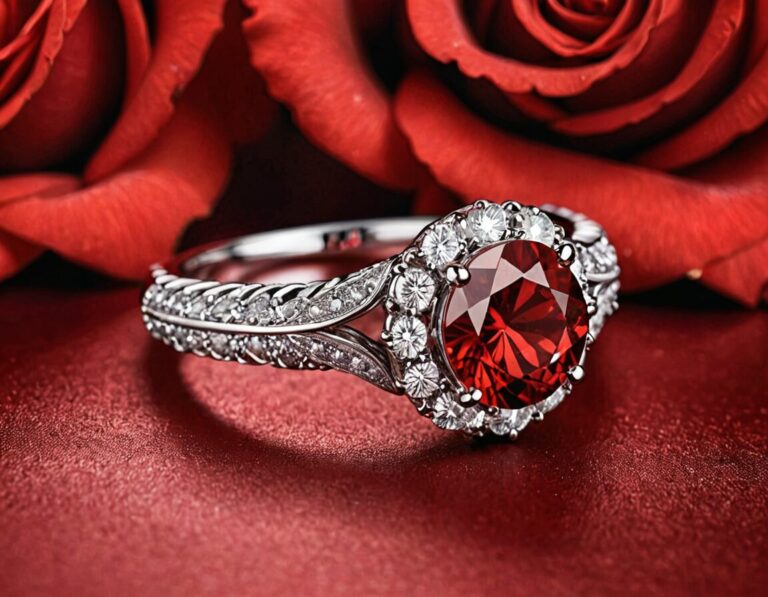When shopping for a diamond, one of the most important factors to consider is clarity. Diamond clarity refers to the absence of internal inclusions and external blemishes. These imperfections can affect both the appearance and value of the diamond. This guide will help you understand diamond clarity and how it impacts the diamond’s look and value.
What is Diamond Clarity?
Diamond clarity measures the purity and rarity of the stone. The fewer the imperfections, the higher the clarity grade. The Gemological Institute of America (GIA) developed a clarity grading scale that is universally accepted. The clarity grades range from Flawless (FL) to Included (I1, I2, I3).
GIA Clarity Scale
| Clarity Grade | Description |
|---|---|
| FL | Flawless – No inclusions or blemishes visible under 10x magnification |
| IF | Internally Flawless – No inclusions, only blemishes visible under 10x magnification |
| VVS1, VVS2 | Very, Very Slightly Included – Minute inclusions that are difficult to see under 10x magnification |
| VS1, VS2 | Very Slightly Included – Minor inclusions that are somewhat easy to see under 10x magnification |
| SI1, SI2 | Slightly Included – Noticeable inclusions that are easy to see under 10x magnification |
| I1, I2, I3 | Included – Obvious inclusions that can affect transparency and brilliance |
How Clarity Affects a Diamond’s Look
1. Flawless (FL) and Internally Flawless (IF)
- Appearance: Diamonds with these grades are extremely rare and exhibit no inclusions or blemishes visible under 10x magnification. They sparkle brilliantly and look pristine.
- Value: These diamonds are the most expensive due to their rarity and perfect clarity.
2. Very, Very Slightly Included (VVS1, VVS2)
- Appearance: VVS diamonds have minute inclusions that are very hard to spot even under magnification. To the naked eye, they appear flawless.
- Value: These diamonds are highly valued, though slightly less expensive than FL and IF diamonds.
3. Very Slightly Included (VS1, VS2)
- Appearance: VS diamonds have minor inclusions that are not easily visible without magnification. They still exhibit excellent brilliance and are nearly indistinguishable from higher-graded diamonds to the naked eye.
- Value: They offer a good balance between appearance and price, making them popular among buyers.
4. Slightly Included (SI1, SI2)
- Appearance: SI diamonds have noticeable inclusions that can be seen under 10x magnification. Some inclusions may be visible to the naked eye, but they generally do not detract significantly from the diamond’s beauty.
- Value: These diamonds are more affordable and can offer good value if the inclusions are well-placed and do not impact the overall appearance.
5. Included (I1, I2, I3)
- Appearance: I diamonds have obvious inclusions that can affect the diamond’s brilliance and transparency. The inclusions are visible to the naked eye.
- Value: These are the most affordable diamonds, but the inclusions can impact their beauty and structural integrity.
Clarity vs. Other Factors
While clarity is crucial, it is just one of the “Four Cs” used to evaluate diamonds. The others are Cut, Color, and Carat weight. Here’s a quick comparison to understand how clarity fits in with the other factors:
| Factor | Importance |
|---|---|
| Clarity | Affects the rarity and purity of the diamond. High clarity means fewer inclusions and blemishes. |
| Cut | Determines how well the diamond reflects light. A well-cut diamond can appear more brilliant even with lower clarity. |
| Color | Measures the diamond’s colorlessness. Less color generally means higher value. |
| Carat | Refers to the diamond’s weight. Larger diamonds are rarer and more valuable but clarity plays a significant role in overall beauty. |
Tips for Choosing the Right Clarity
- Balance Clarity with Other Cs: Don’t focus solely on clarity. A well-cut diamond with lower clarity can be more beautiful than a high-clarity diamond with poor cut.
- Consider the Diamond’s Size: In smaller diamonds, inclusions are harder to see, so you can opt for slightly lower clarity grades without sacrificing appearance.
- Inspect the Diamond in Person: Whenever possible, look at the diamond under magnification and with the naked eye to see if the inclusions are noticeable.
- Work with a Reputable Jeweler: Ensure that the diamond comes with a certification from a reputable grading laboratory like GIA or AGS.
FAQs About Diamond Clarity
What is the Best Clarity Grade?
The best clarity grade is Flawless (FL). However, grades like Internally Flawless (IF) and Very, Very Slightly Included (VVS1, VVS2) also offer exceptional purity and value.
Can You See Inclusions with the Naked Eye?
Inclusions in diamonds with a clarity grade of VS2 or higher are typically not visible to the naked eye. Inclusions in SI1 or lower grades may be visible, especially in larger diamonds.
Does Clarity Affect a Diamond’s Durability?
Yes, especially in lower clarity grades (I1, I2, I3), where larger inclusions can affect the diamond’s structural integrity.
Should I Always Choose the Highest Clarity Grade I Can Afford?
Not necessarily. Balancing clarity with other factors like cut and carat weight often results in a more beautiful and well-rounded diamond.
Conclusion
Understanding diamond clarity is essential for making an informed purchase. While higher clarity grades indicate fewer imperfections and can significantly affect the diamond’s appearance and value, it’s important to balance clarity with cut, color, and carat weight. By considering all these factors, you can find a diamond that offers the best combination of beauty and value.
